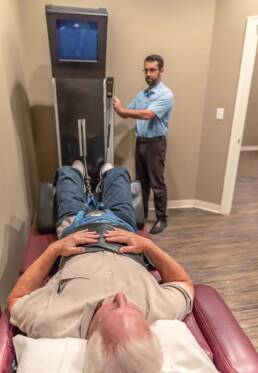Whiplash injuries are all too common, often resulting from car accidents, sports mishaps, or other sudden, forceful movements of the neck. These injuries can be painful and debilitating, affecting one’s quality of life. While many people turn to conventional medical treatments for relief, chiropractic care has emerged as a valuable and effective alternative. In this blog, we’ll explore how chiropractic treatment can aid in the recovery of whiplash injuries.
Understanding Whiplash
Before delving into the benefits of chiropractic care, let’s first understand what whiplash is. Whiplash is a neck injury caused by a rapid, back-and-forth motion of the neck, like the cracking of a whip.
This motion can damage the muscles, ligaments, and tendons in the neck and upper back, leading to a range of symptoms, including:
- Neck pain and stiffness
- Headaches
- Shoulder pain
- Arm pain or numbness
- Fatigue
- Dizziness
- Difficulty concentrating
- Ringing in the ears (tinnitus)
Conventional Treatments vs. Chiropractic Care
Traditional medical treatments for whiplash injuries often include rest, pain medication, physical therapy, and, in severe cases, surgery. While these treatments can be effective, they may not address the root cause of the problem – misalignments in the spine and neck.
Chiropractic care takes a different approach. Chiropractors are trained to identify and correct misalignments in the spine through a technique called spinal manipulation or adjustment.
Here’s how chiropractic treatment can aid in the recovery of whiplash injuries:
Pain Relief
Chiropractic adjustments can provide immediate relief from neck pain and stiffness, allowing patients to regain their mobility and reduce their reliance on pain medications.
Restoration of Range of Motion
Whiplash injuries can severely limit the range of motion in the neck. Chiropractic adjustments help restore proper joint function, allowing for a greater range of motion.
Reduction of Inflammation
Chiropractic care can reduce inflammation in the affected area, which is crucial for healing damaged tissues.
Prevention of Chronic Pain
Without proper treatment, whiplash injuries can lead to chronic neck pain and headaches. Chiropractic care can prevent these long-term issues by addressing the underlying problems.
Individualized Treatment
Chiropractors develop personalized treatment plans based on the patient’s specific condition and needs, ensuring that the care provided is tailored to the individual.
Non-Invasive Approach
Chiropractic care is a non-invasive and drug-free approach to healing whiplash injuries, making it a preferred option for many patients who want to avoid surgery or excessive medication.
Holistic Care
Chiropractors often incorporate other holistic therapies such as massage, stretching exercises, and lifestyle recommendations to enhance the overall well-being of the patient.
Chiropractic Techniques for Whiplash
Whiplash injuries are a common consequence of car accidents and other traumatic incidents, often resulting in pain, stiffness, and reduced mobility in the neck and upper back. Chiropractic care offers a range of techniques that can effectively address the underlying issues associated with whiplash injuries. These techniques aim to reduce pain, improve range of motion, and promote the natural healing process. Here are some of the key chiropractic techniques used for whiplash:
- Spinal Manipulation (Adjustment): This is perhaps the most well-known chiropractic technique. It involves the application of controlled force to spinal joints that may have become misaligned due to the whiplash injury. Spinal manipulation helps to restore proper alignment, reduce pain, and enhance mobility in the affected area.
- Flexion-Distraction Technique: This technique is particularly useful for treating herniated discs and nerve-related pain that can result from whiplash injuries. It involves a gentle, hands-on approach where the chiropractor uses a specialized table to apply a stretching motion to the spine. This helps to decompress spinal discs, reduce pressure on nerves, and alleviate pain.
- Instrument-Assisted Manipulation: Some chiropractors use specialized instruments to perform adjustments. These instruments deliver controlled and precise impulses to the affected spinal joints, providing relief without the need for manual manipulation. It can be a preferred technique for patients who are uncomfortable with manual adjustments.
- Massage and Soft Tissue Therapies: Whiplash injuries often cause muscle tension and trigger points in the neck and upper back. Chiropractors may employ massage and soft tissue techniques to relax muscles, reduce inflammation, and improve blood flow to the injured area. This can help in pain relief and promote healing.
- Therapeutic Exercises: Chiropractors often prescribe specific exercises to strengthen and stabilize the neck and upper back. These exercises can improve posture, enhance range of motion, and prevent future injuries. Patients are typically guided on how to perform these exercises safely at home.
- Heat and Cold Therapy: Applying heat or cold to the affected area can help reduce inflammation and alleviate pain. Chiropractors may use hot packs, cold packs, or a combination of both to provide relief and promote healing.
- Lifestyle and Ergonomic Advice: Chiropractors take a holistic approach to care. They may provide guidance on lifestyle modifications and ergonomic improvements to prevent future injuries. This can include recommendations on proper sitting posture, desk setup, and lifting techniques.
- Electrical Stimulation: In some cases, chiropractors use electrical stimulation devices to promote muscle relaxation and reduce pain. These devices send low-level electrical currents to the muscles, encouraging them to relax and release tension.
- Ultrasound Therapy: Ultrasound therapy uses sound waves to generate deep heat within body tissues. This can increase blood flow and promote healing in injured areas.
- Nutritional Counseling: Nutrition plays a crucial role in the body’s ability to heal. Chiropractors may provide dietary recommendations and suggest supplements that can support the healing process.
It’s important to note that the specific techniques used will depend on the individual’s condition, the chiropractor’s assessment, and the patient’s preferences. Chiropractors tailor their treatments to each patient’s unique needs to ensure the most effective and comfortable care. If you’ve experienced a whiplash injury, consulting with a chiropractor can be a valuable step toward recovery and pain relief.
Are you tired of living with pain and discomfort from a recent injury or chronic condition? Don’t let it hold you back any longer! It’s time to take control of your well-being and embrace a healthier, pain-free life.
Take the First Step Towards Wellness Today!
- Consult a Healthcare Professional: If you’re experiencing pain, discomfort, or any health issue, reach out to a healthcare professional. They can provide expert guidance and create a tailored plan for your specific needs.
- Explore Treatment Options: There are various approaches to improving your health and well-being. Whether it’s physical therapy, chiropractic care, dietary changes, or regular exercise, explore the options available to you.
- Prioritize Self-Care: Don’t neglect self-care. Make time for relaxation, stress management, and getting enough sleep. Small lifestyle changes can have a big impact on your overall health.
- Stay Informed: Keep educating yourself about your health and treatment options. Knowledge is empowering, and it enables you to make informed decisions about your well-being.
- Connect with Support: Share your health journey with friends and family. A support system can make a world of difference in your motivation and success.
- Take Action Now: Procrastination won’t lead to better health. Start making positive changes today, no matter how small they may seem.
Remember, your health is your most valuable asset, and investing in it pays dividends for a lifetime of happiness and well-being. Don’t wait for tomorrow; take action now and reclaim your health and vitality!
Your journey to a healthier, pain-free life begins with a single step. Take that step today!

Ready for a complimentary consultation? Get in touch today!
Much like an engineer, we focus on setting up your body to do the activities that you want to do most. An engineer would make sure a bridge could accommodate Houston traffic, and we will make sure your body can accommodate your favorite sport, family activity, or your next adventure.
Like this article? Spread the word!
Related Posts
April 23, 2024
Using a Chiropractor After a Car Accident
After a car accident, seeking chiropractic care is essential. Learn how Freedom…
December 27, 2023
Recovering from Auto Accidents: Why Seeking a Chiropractic Evaluation is Crucial
Discover the importance of immediate chiropractic evaluation after an auto accident in…
November 29, 2023
Relief Roadmap: Managing Post-Accident Headaches with Chiropractic Care in Conroe, TX
Experience relief from post-accident headaches and migraines at Freedom Chiropractic in…




